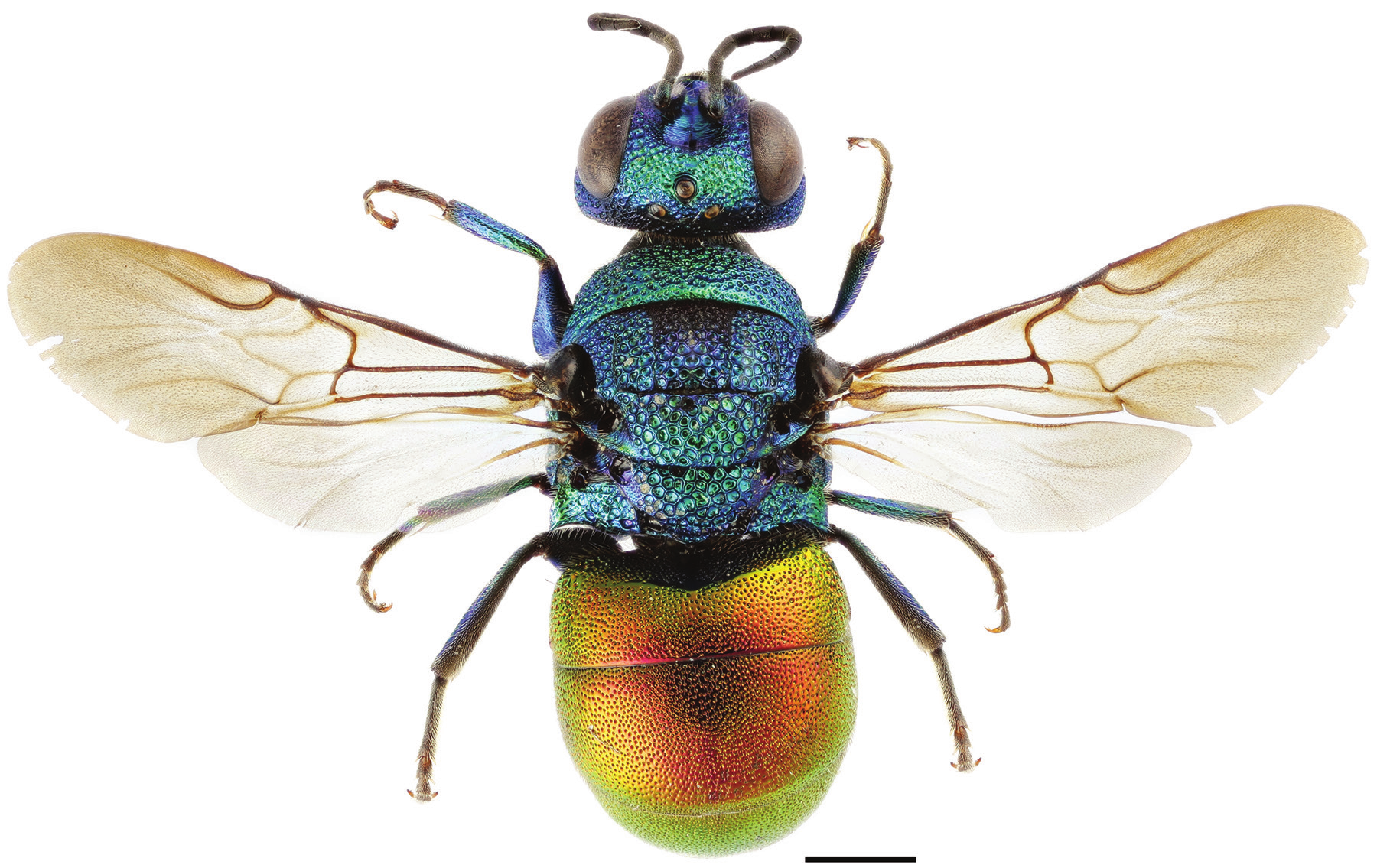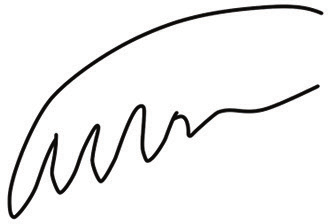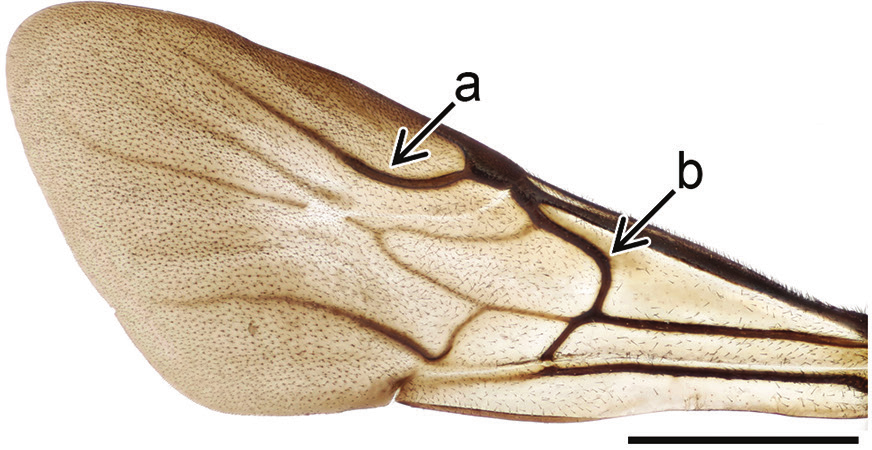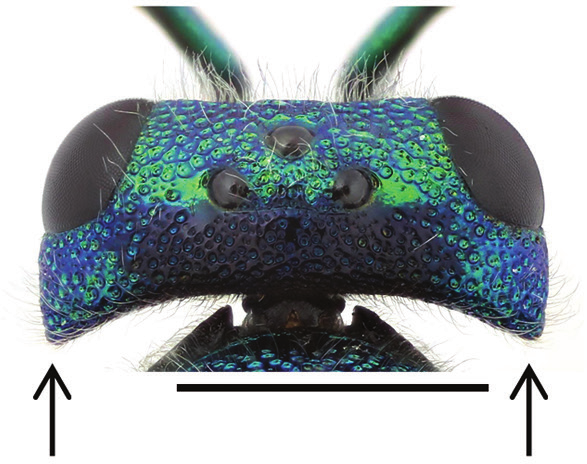Holopyga generosa
Figure 47
Holopyga generosa ♂. Scale 1 mm.
- Innhold
- Diagnosis
- Distribution
- Biology
Diagnosis
Figure 3
Tarsal claw: Holopyga generosa.
Figure 7
Forewing: Holopyga generosa. a radial sector vein, b medial vein. Scale 1 mm.
Figure 48
Head, dorsal view (arrows indicating temples): Holopyga generosa ♀. Scale 1 mm.
Length 7–9 mm.
Both sexes are similarly bicoloured with a green or blue head and mesosoma, and a dorsally red metasoma (Fig. 47). The colouration resembles that of Hedychrum gerstaeckeri and the male of H. nobile and H. niemelai, but H. generosa always has multidentate tarsal claws (Fig. 3), angular margins on the head (as in Fig. 48) and an evenly rounded margin of T3 (as in Figs 49, 50). In Hedychrum, the claws are bifid, the head margins are rounded and T3 usually has angular prominences laterally.
Distribution
Denmark, Estonia, Finland, Latvia, Lithuania, Sweden. Common.
Trans-Palearctic: Europe, Asia Minor, northern Africa, China (Linsenmaier 1959).
Be aware that the records present in the GBIF map may be misleading for some countries due to unrevised data sets or missing information.
GBIF Taxon: Holopyga generosa (Förster, 1853)Biology
Habitat: sparsely vegetated sandy areas, dry meadows. Adults visit flowers of Apiaceae, Asteraceae, Euphorbiaceae, Onagraceae and Rosaceae (Molitor 1935, Linsenmaier 1997, Rosa 2004, our own obs.).
Flight period: late May to late August.
Host: Astata boops (Schranck) (Crabronidae) (Veenendaal 2012, our own obs.). Females lay their eggs in nymphs of Heteroptera before they have been captured and brought to the nest by the host (Veenendaal 2012).



